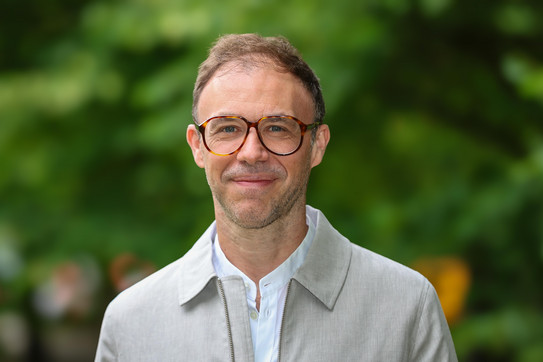Prof. Dr. Mirko Cinchetti
Prof. Dr. Mirko Cinchetti
(he, him, his)
Mail: mirko.cinchettitu-dortmundde
Tel.: +49 231 755 5438
Otto-Hahn-Straße 4, Room P1-02-112
Researcher IDs:
Social media:

Focus of work
The main goal of our group is to control the magnetic and electronic properities of solids on the shortest possible timescale. In particular, we use femtosecond laser pulses to achieve ultrafast control of the spin and charge degrees of freedom without energy dissipation i.e. by exploiting coherent effects. The main experimental methods are:
- time-resolved optical and magneto-optical spectroscopy
- spin- and time-resolved photoelectron spectroscopy
The main material systems under study are:
- Spin-textured and magnetically ordered two-dimensional electronic systems: 2D semiconductors, 2D antiferromagnets, topological insulators, quantum wells, ...
- Hybrid molecular interfaces with non-trivial spin properties (molecular spinterfaces).
Our research is funded by the Deutsche Forschungsgemeinschaft (DFG) and by the European Research Council (ERC).
Information for students
For information on open positions for bachelor, master and PhD students please contact us!
Current courses (SoSe 25)
Physik IV
Main research career achievements
My scientific education started at Università degli Studi di Pavia (Italy) and National University of Ireland Maynooth (Ireland) in the field of quantum information and quantum computation theory, exploring the use of spin as a quantum mechanical two-level system to store and manipulate quantum information. I then moved into the field of experimental solid-state physics and started a PhD at the Johannes Gutenberg University in Mainz (Germany), under the guidance of one of the world-leading experts in photoemission electron microscopy: Prof. Gerd Schönhense. During the PhD I established photoemission electron microscopy as a tool for the investigation of optical near fields, opening the way for the implementation of this experimental method in the field of plasmonics. In 2004, after my PhD, I moved to University od Kaiserslautern (Germany) for a Postdoctoral position in the group of Prof. Martin Aeschlimann, a world-leading expert in time-resolved photoemission methods with femtosecond time-resolution. Combining my previous experience on photoemission with the knowledge on time-resolved methods I moved in the novel field of femto-magnetism. In 2008 I received a permanent position (as an assistant professor, in German “akademischer Rat”) at the University of Kaiserslautern, where I also obtained my Habilitation in Experimental Physics in 2012.
During my Habilitation I have opened a new research direction in femtosecond magnetism - femtosecond molecular spintronics, and secured funding in different German and European funding schemes. In 2015 I was elected as German representative (MC member) for the COST Action CA15128: Molecular Spintronics (MOLSPIN). In October 2016 I was appointed as full professor (W3) at TU Dortmund University.





